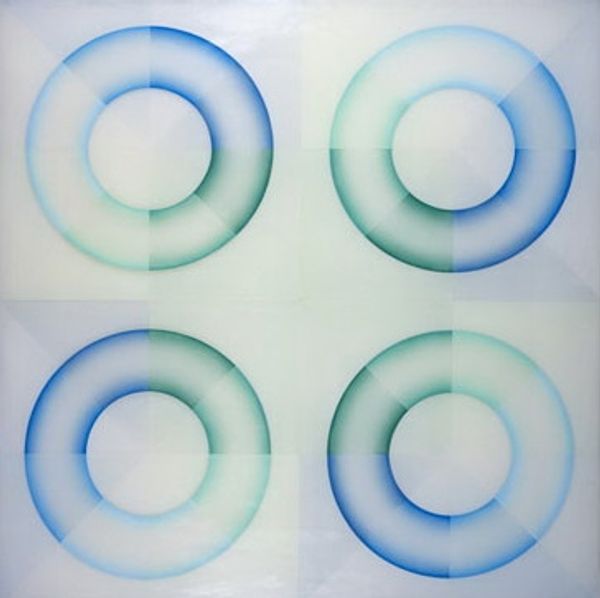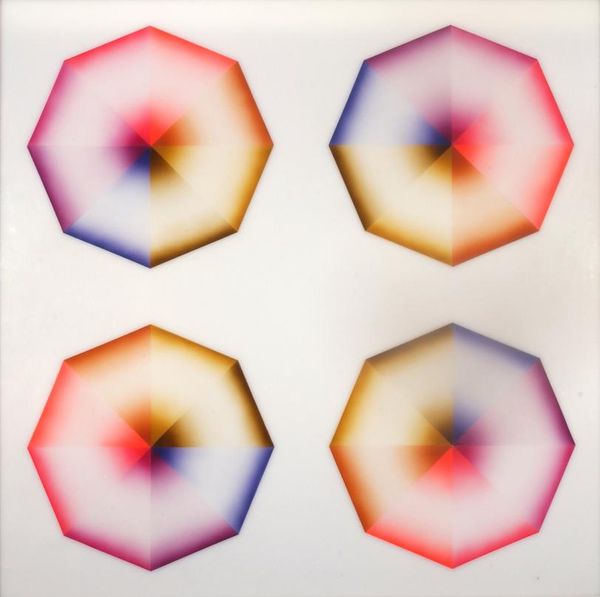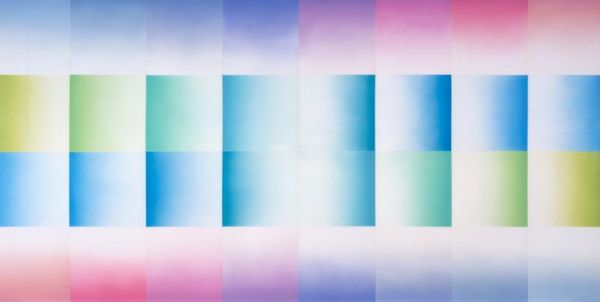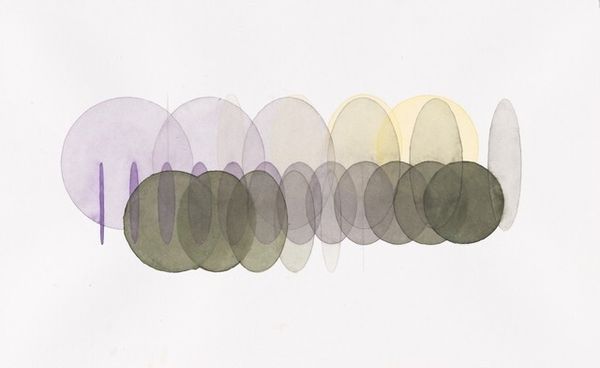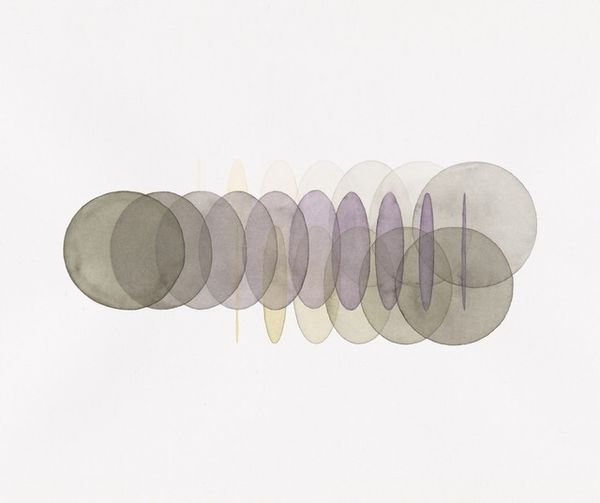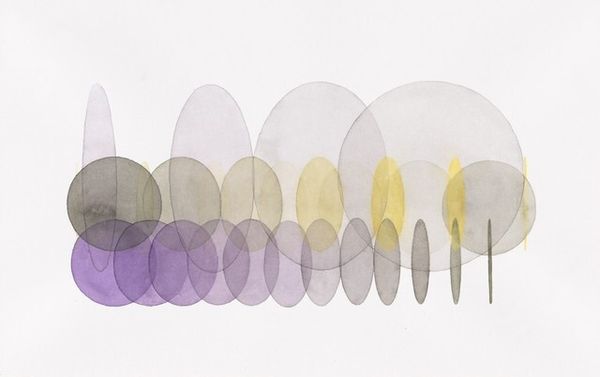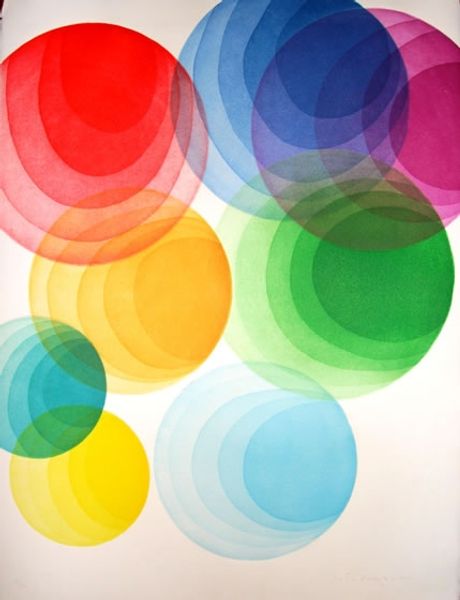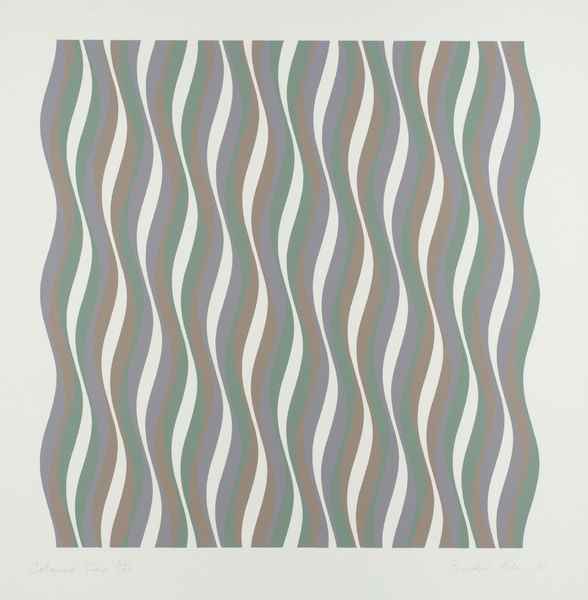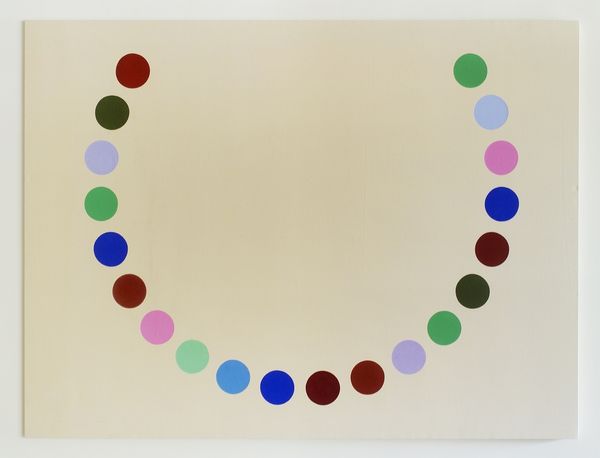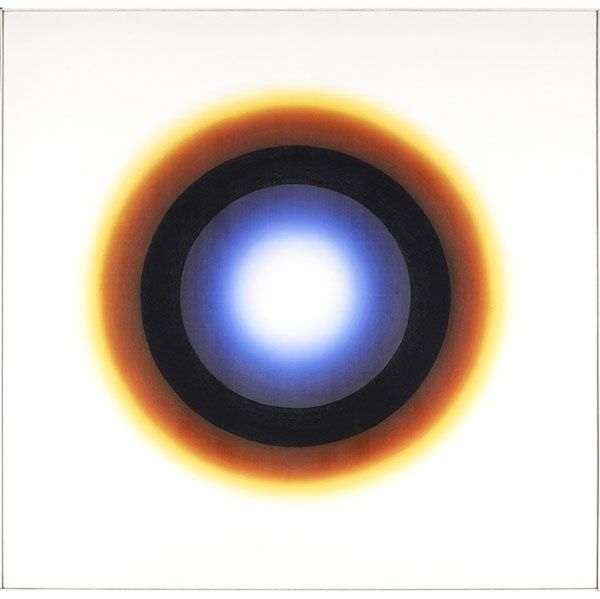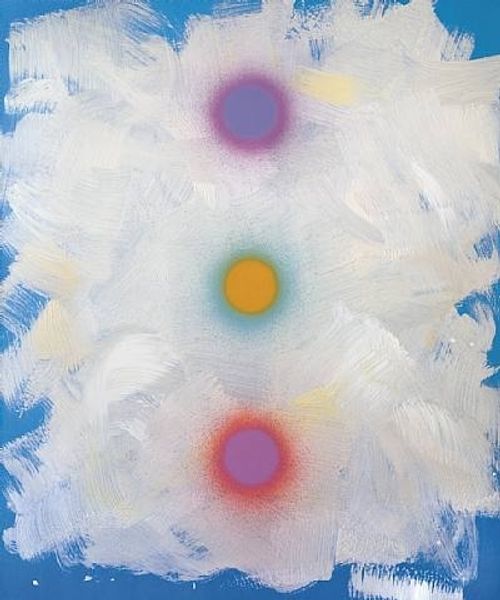
acrylic-paint
#
abstract expressionism
#
abstract painting
#
circle
#
acrylic-paint
#
geometric-abstraction
#
abstract-art
#
pop-art
#
abstract art
#
hard-edge-painting
Copyright: Judy Chicago,Fair Use
Curator: Judy Chicago's "Pasadena Lifesavers Yellow Series #2," created in 1970, features four meticulously rendered, concentric circles of color. Editor: The first thing that strikes me is the almost hypnotic effect of those soft, blurred color transitions within the hard-edged geometry. The muted palette is surprisingly soothing. Curator: Knowing this was executed in acrylic, during a time when the material was becoming increasingly available for artists, illuminates the intention to experiment with both color and the very idea of high and low art. She initially took up spray-painting cars for aesthetic and professional reasons, and acquired unique techniques that she employed within her artmaking, challenging traditionally masculine vocations by taking up the tools of industrial production. Editor: I'm struck by the subtle play of light and shadow within each circle. It almost feels like these forms are hovering just above the surface of the canvas. It’s a compelling push and pull between flatness and depth. Curator: Indeed. And it’s crucial to note Chicago's place within the Pattern and Decoration movement. This series highlights the devaluation of 'feminized' crafts while aiming to reintroduce decorative principles into a fine arts context, challenging a tradition of gendered and classed hierarchies. The execution mirrors industrial production, subtly underscoring the systematic omission and marginalization of art done by women. Editor: Absolutely. Looking closely, one notices that no two color combinations are quite alike. Each ring seems to operate as an independent study of chromatic interaction. What appear at first to be perfect geometric forms are, on further consideration, each uniquely individuated, despite being four parts of a series. Curator: I see Chicago's series as emblematic of that late 60’s and early 70’s interrogation of value within creative labor. What’s craft, what's art, who makes it, and how does that inform our perception? Editor: It’s true, it complicates that perceived art world purity in many interesting and important ways. Curator: Seeing the legacy, I am again reminded to ask these same questions regarding material culture that challenge established boundaries. Editor: This deep dive has heightened my appreciation for how line, color, and light intersect to evoke emotion.
Comments
No comments
Be the first to comment and join the conversation on the ultimate creative platform.
